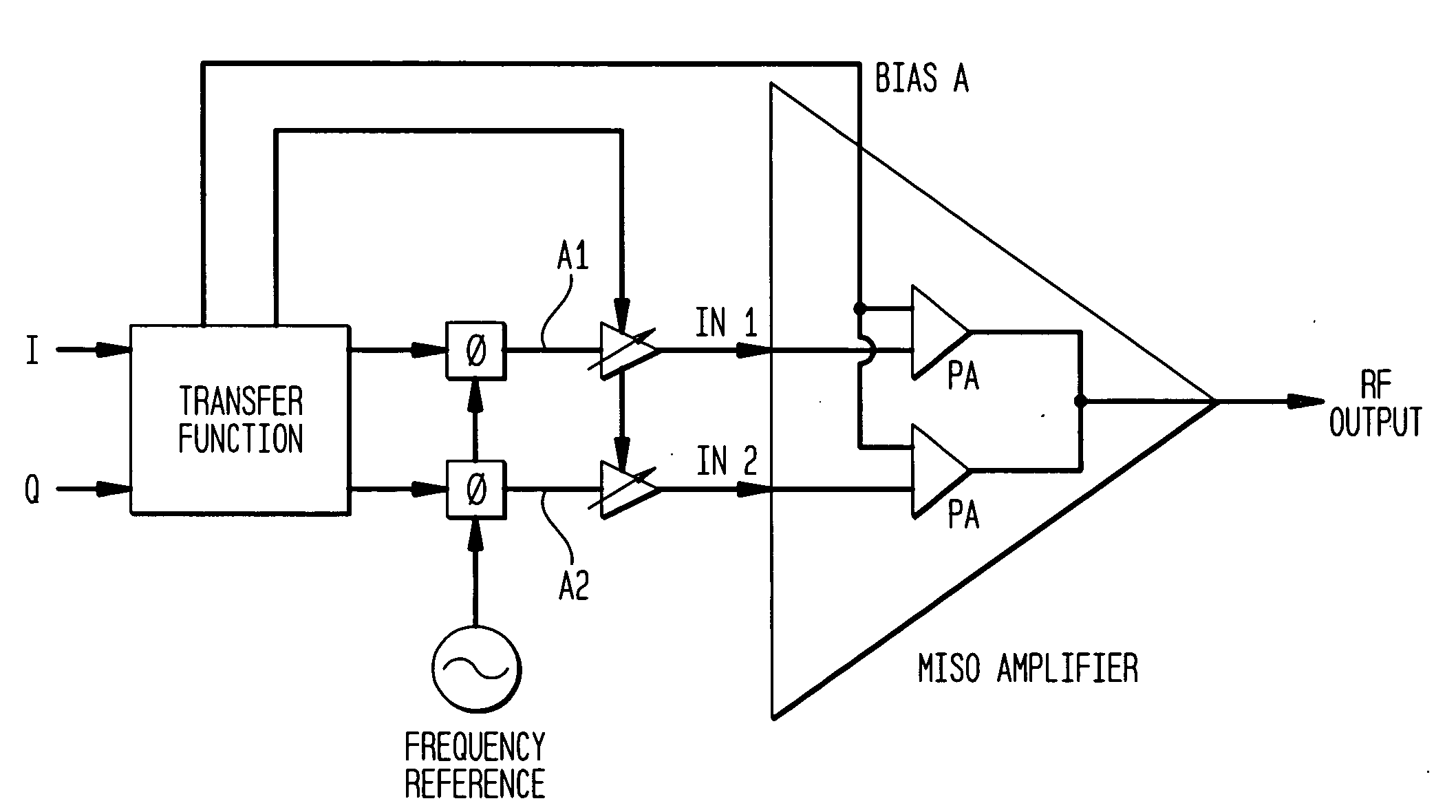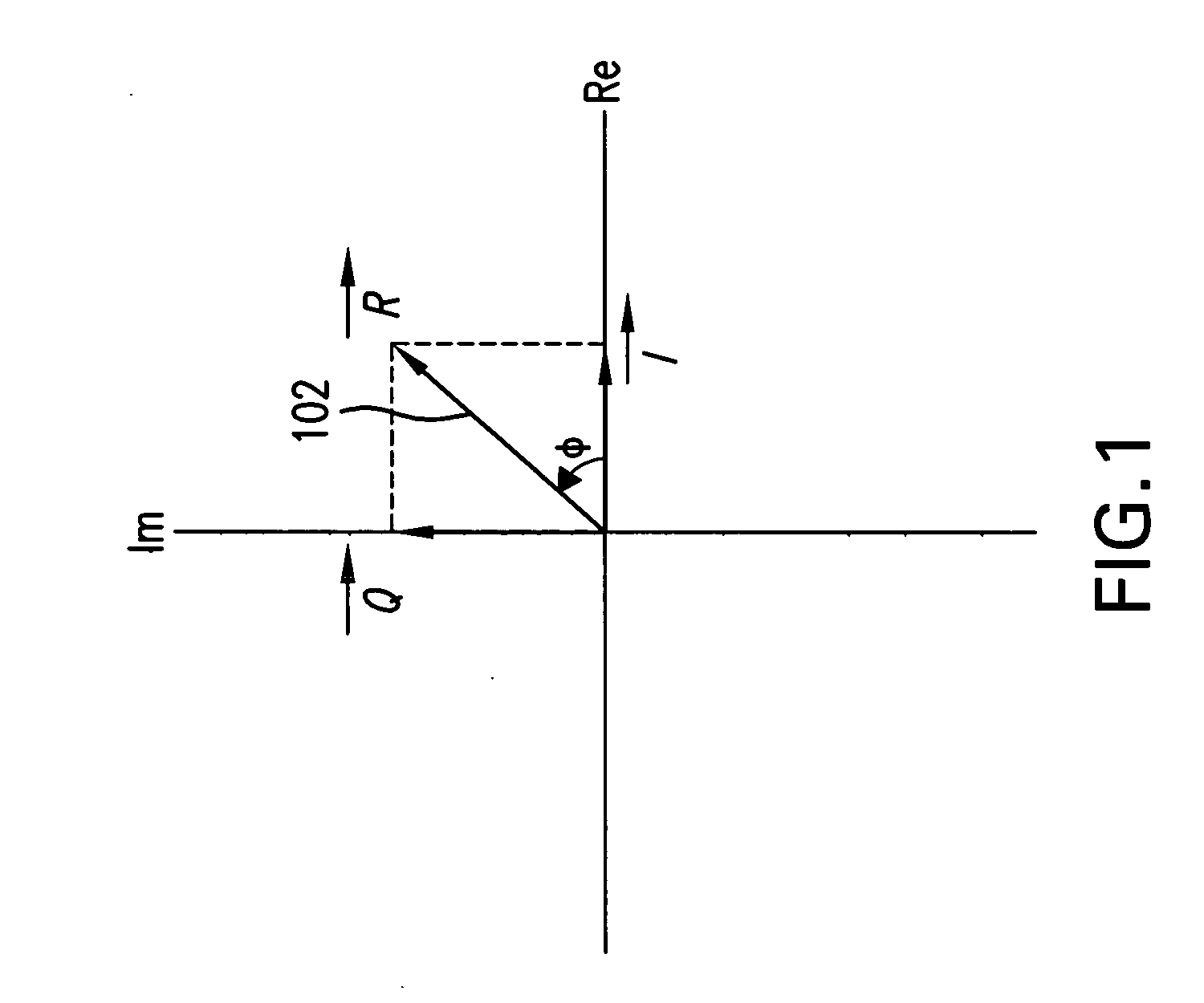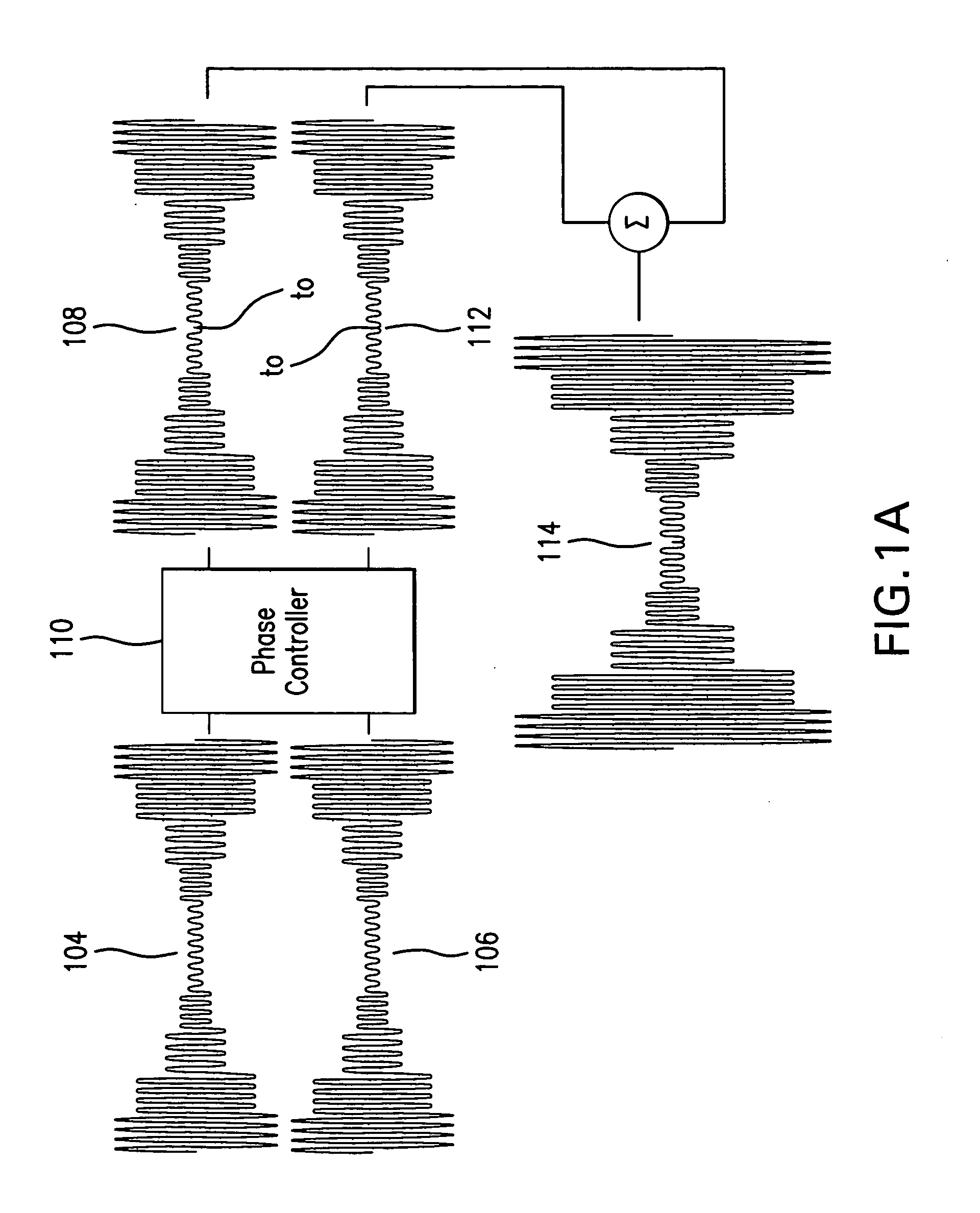Systems and methods of RF power transmission, modulation, and amplification, including embodiments for amplifier class transitioning
a technology of power transmission and modulation, applied in the field of vector combining power amplification, can solve the problems of phase and amplitude errors, gain and phase imbalance, and the magnitude of phase shift transform may not be exactly as theoretically or practically desired, and achieve the effect of cost saving
- Summary
- Abstract
- Description
- Claims
- Application Information
AI Technical Summary
Benefits of technology
Problems solved by technology
Method used
Image
Examples
exemplary embodiment 1000
[0289]FIG. 10 is a block diagram that conceptually illustrates an exemplary embodiment 1000 of the CPCP 2-Branch VPA embodiment: An output signal r(t) of desired power level and frequency characteristics is generated from in-phase and quadrature components according to the CPCP 2-Branch VPA embodiment.
[0290]In the example of FIG. 10, a clock signal 1010 represents a reference signal for generating output signal r(t). Clock signal 1010 is of the same frequency as that of desired output signal r(t).
[0291]Referring to FIG. 10, an Iclk_phase signal 1012 and a Qclk_phase signal 1014 represent amplitude analog values that are multiplied by the in-phase and quadrature components of Clk signal 1010 and are calculated from the baseband I and Q signals.
[0292]Still referring to FIG. 10, clock signal 1010 is multiplied with Iclk_phase signal 1012. In parallel, a 90° degrees shifted version of clock signal 1010 is multiplied with Qclk_phase signal 1014. The two multiplied signals are combined to...
exemplary embodiment 1500
[0357]FIG. 15 is a block diagram that conceptually illustrates an exemplary embodiment 1500 of the Direct Cartesian 2-Branch VPA embodiment. An output signal r(t) of desired power level and frequency characteristics is generated from in-phase and quadrature components according to the Direct Cartesian 2-Branch VPA embodiment.
[0358]In the example of FIG. 15, a clock signal 1510 represents a reference signal for generating output signal r(t). Clock signal 1510 is of the same frequency as that of desired output signal r(t).
[0359]Referring to FIG. 15, exemplary embodiment 1500 includes a first branch 1572 and a second branch 1574. The first branch 1572 includes a vector modulator 1520 and a power amplifier (PA) 1550. Similarly, the second branch 1574 includes a vector modulator 1530 and a power amplifier (PA) 1560.
[0360]Still referring to FIG. 15, clock signal 1510 is input, in parallel, into vector modulators 1520 and 1530. In vector modulator 1520, an in-phase version 1522 of clock si...
exemplary embodiment 2000
[0414]FIG. 20 is a block diagram that illustrates an exemplary embodiment 2000 of a transfer function module, such as transfer function modules 710 and 712 of FIG. 7A, implementing the process flowchart 1900. In the example of FIG. 20, transfer function module 2000 receives I and Q data signals 2010 and 2012. In an embodiment, I and Q data signals 2010 and 2012 represent I and Q data components of a baseband signal, such as signals 702 and 704 in FIG. 7A.
[0415]Referring to FIG. 20, in an embodiment, transfer function module 2000 samples I and Q data signals 2010 and 2012 according to a sampling clock 2014. Sampled I and Q data signals are received by components 2020 and 2022, respectively, of transfer function module 2000. Components 2020 and 2022 measure, respectively, the magnitudes of the sampled I and Q data signals. In an embodiment, components 2020 and 2022 are magnitude detectors.
[0416]Components 2020 and 2022 output the measured I and Q magnitude information to components 20...
PUM
 Login to View More
Login to View More Abstract
Description
Claims
Application Information
 Login to View More
Login to View More - R&D
- Intellectual Property
- Life Sciences
- Materials
- Tech Scout
- Unparalleled Data Quality
- Higher Quality Content
- 60% Fewer Hallucinations
Browse by: Latest US Patents, China's latest patents, Technical Efficacy Thesaurus, Application Domain, Technology Topic, Popular Technical Reports.
© 2025 PatSnap. All rights reserved.Legal|Privacy policy|Modern Slavery Act Transparency Statement|Sitemap|About US| Contact US: help@patsnap.com



